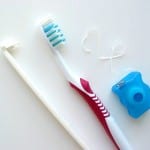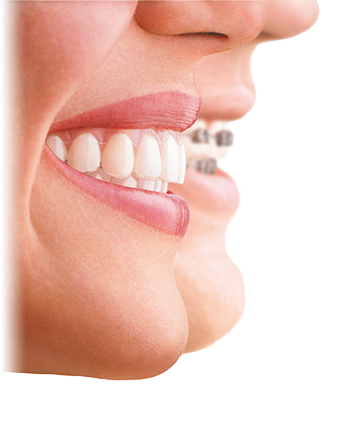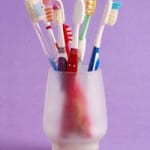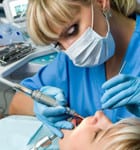 Flossing and inter-dental brushing form part of a good oral hygiene regime. Dentists will advise when is best to use either dental floss or an inter-dental brush, and on the most appropriate technique. Where dental devices or restorations are present, an inter-dental brush may be more suitable than floss.
Flossing and inter-dental brushing form part of a good oral hygiene regime. Dentists will advise when is best to use either dental floss or an inter-dental brush, and on the most appropriate technique. Where dental devices or restorations are present, an inter-dental brush may be more suitable than floss.
The difference between floss and an inter-dental brush
Floss is made of a collection of nylon fibres or a plastic thread. The thread is held between the fingers and inserted between and around each tooth to remove all debris and plaque. Some flossing disposable devices have a small plastic handle that may be held during flossing.
Inter-dental brushes comprise a tiny bristled head attached to a plastic handle, similar to the handle of a toothbrush. The bristled head comes in different sizes, attaches to the handle and is replaceable. Individuals hold the inter-dental brush handle while moving the bristles between and around the teeth, cleansing the surfaces between teeth and just below the gum line.
Dental flossing technique
Take a piece of dental floss, about 18 inches in length. Wrap the floss around the each index finger and gradually insert it between the teeth, starting at one end of the upper dental arch. Clean each tooth, ensuring the floss gently moves in a C curve between and around the tooth and gum line. Use a fresh part of the 18 inch piece of floss per tooth. When the upper dental arch is complete, get another 18 inch piece of floss and repeat the action for the lower dental arch.
Inter-dental brushing technique
Use the right choice of brush head and to place it gently between the teeth, carefully removing it along with stuck food debris and sticky plaque. Repeat the action for each tooth so that any bacteria-attracting agents are removed to prevent tooth decay and gum disease. If you would like you would like to know more about oral hygiene, please contact the team at City Dental in the heart of Leeds.









